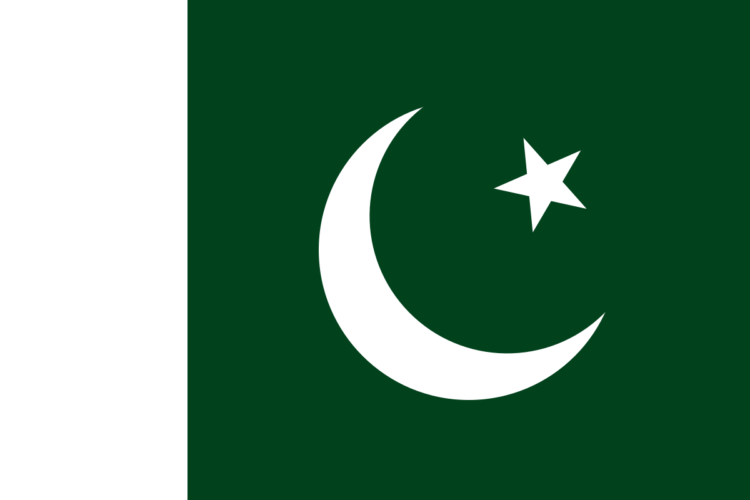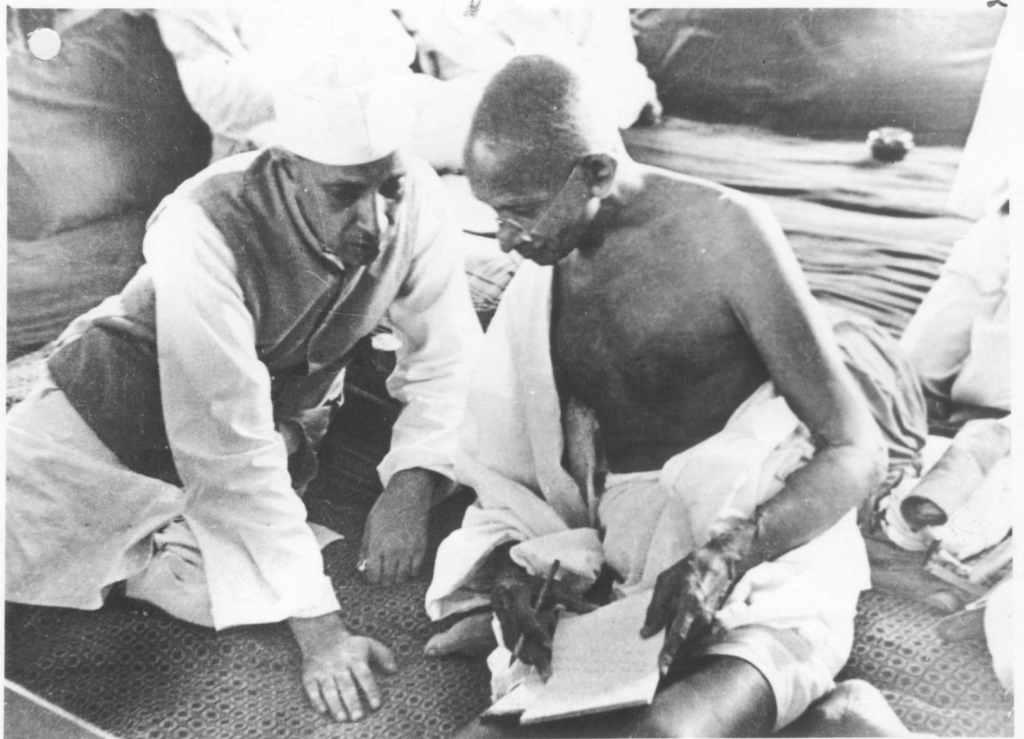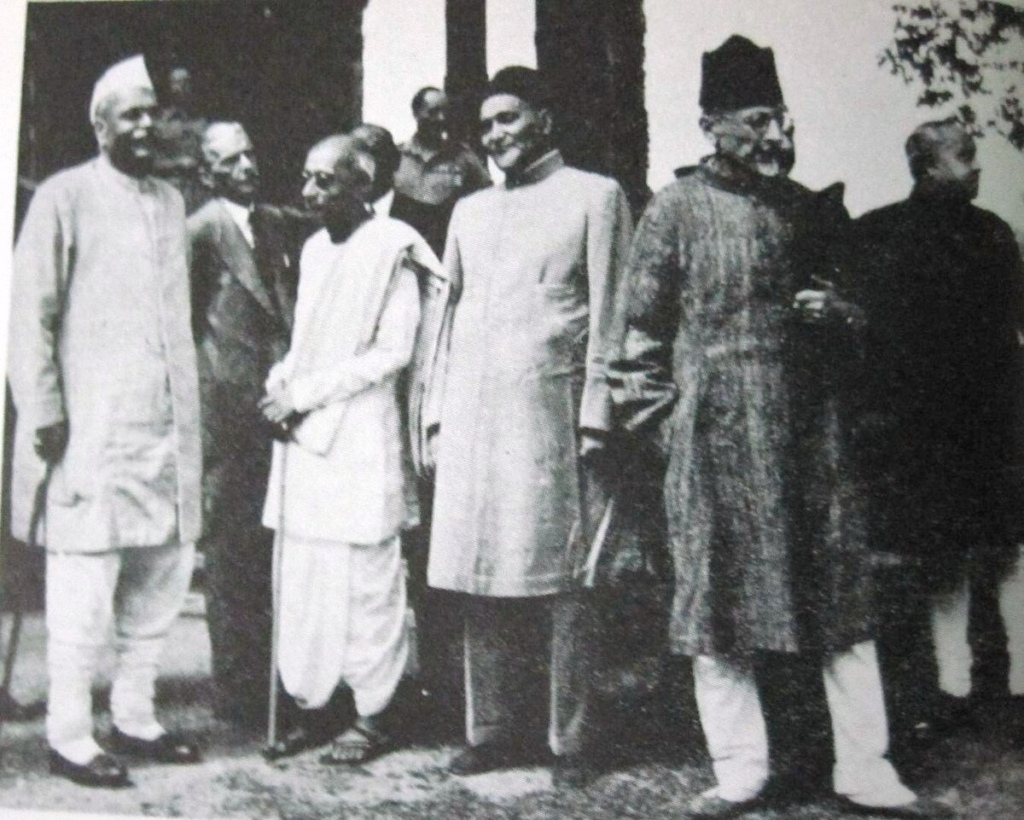This series will cover the history of Modern Pakistan, from the earliest notions of a separatist Muslim governance to the creation of Pakistan and all the way to 2023.
You can read post covering 1857 – 1927 here: A History of Modern Pakistan #1 1857 – 1927
You can read post covering 1927- 1939 here: A History of Modern Pakistan #2 1927 – 1939
1939 -1947
As WW2 began in 1939, Congress power in India came to an end as the Allied powers needed all support of their subjects. The congress asked for an administrative council so they can continue running India but this was rejected by the British and thus they were dissolved. This was called the Day of Deliverance by Jinnah, i.e., thank God, the Congress rule has ended.
Khaskar Movement
This movement was led by Allama Mashriqi, a charismatic Muslim intellectual who began a social movement to return to ‘humans of self-reform’. This included people of all faiths and statuses. Whilst the elite politicians were looking at issues from an administration and governance level, Mashriqi was looking at grass-roots issues. Poverty did not discriminate. The movement grew very quickly. Mashriqi was so popular the largest the movement grew was up to 4 million members and he even had a military unit ready to defend the Muslims. Mashriqi also famously supported a unified India, for him the British were dividing the Indians. He was vocal about his problems with the British and colonialism. In 1940, they held peaceful protest in Lahore. As tensions rose between them and the police, the British instructed the police to fire. 50 defenceless Khaskars were mercilessly killed.
The Lahore Resolution
In 1940, the Muslim League had their annual session. Jinnah gave his address on Muslims not being a minority but a distinct people and they need their own state. The League went from calling for separate electoral states to a separate state. This was called the Lahore Resolution. The British did not like this move as they had long considered themselves as the architects of the unity of India and an Indian nation. India itself was a little continent.
The Cripps Mission
The British were being pressured by the US to give the Indians what they want so they could ensure alliance against the Japanese. So in 1942, the Cripps Mission was set up to unite India and gauge support but this failed once again. The Cripps statement promised sovereignty to India but also gave minorities like the Muslims a voice. The Congress rejected this and in protest, Congress also said they will support Japan in the war. Gandhi called for the British to orderly remove themselves from India. This was called the Quit India Movement. The British in response imprisoned everyone in Congress including Gandhi within hours.
As the Muslim League was the remaining largest active party, they effectively became the new governors. The British treated them and dealt with them directly. The League spent the next three years promoting the idea of a Pakistan and eased any tensions the Congress put in place.
1943 Bengal Famine
As a result of the war time effort, the Bengal region faced a severe famine, where nearly 4 million people died and over 100,000 displaced. Due to British policy, food was either removed from the region, to support soldiers and the British themselves as well as to prevent the Japanese from taking benefit if there successfully invaded the region. Inflation had ran so high, locals could no longer afford food. The British even prevented the Indians from using their reserves or importing goods. In terms of aid, only a fraction was given and aid increased significantly when the British Indian Army took control of funding in October 1943.
1944 Gandhi Jinnah Talks
Gandhi was released in May 1944 before other Congress members. Gandhi wanted a united India with Muslims and Hindus supporting each other. Whereas Jinnah claimed Muslims were more than ordinary citizens, they had a different religion, values, culture, way of living, and Muslims no longer could live with a sovereign India. Jinnah knew if there was not a separate Pakistan, Muslims would be forever oppressed.

Simla Conference 1945
As the WW2 was coming to an end, the British decided to end British Raj in India. It was no longer viable for the British to be in India. The problem was they could not just walk away without civil war ensuing.
In 1945, after the war, the Congress was released and reinstated. They continued the call for a free India.
The Simla conference was set-up to unite India and form a coalition interim government of Congress and Muslim League at the centre. Jinnah represented the League and Congress put forward a Muslim, Maulana Abul Kalam Azad as its representative. The congress wanted to show it also represented Muslims.
The British wanted a united India. They presented the following proposals in the Wavell Plan:
- Constitutional reforms would be introduced in India
- The Viceroy’s Executive Council will include Hindus and Muslims as well as low-caste Hindus, Shudders, and Sikhs.
- All the members of the Council, except the Viceroy and the Commander-in-Chief, would be Indians.
- An Indian foreign affairs member
- Defence of India was to be in the hands of a British authority till Power was transferred to the Indian hands
- Viceroy consult both the League and Congress on who will be in the council
Essentially they were giving Indians more representation and making sure Muslims get an equal footing. However, the Congress wanted a united India with Hindus ruling and Jinnah was vocal about Pakistan. For Jinnah it was too late to be part of a united India. It became clear Jinnah and his Muslim support will not back down without demands being met.
This was a turning point as many Muslim congress members switched camp. Elsewhere amongst Muslims, they were being rallied for their own homeland.
1945/1946 Elections
The 1935 Act was re-enacted and elections were to be held. The Congress promised a new united India and the Muslim league promised a Pakistan for Muslims and minorities. Congress had taken 57/100 seats and Muslim league had taken 30/100 seats. The Muslim League won votes in Muslims areas leaving them with a mandate.
Delhi Resolution 1946
At the Delhi Resolution, Pakistan was demanded by Jinnah. This was for a single Pakistan sovereign state and not multiple Muslim states. This was so Muslims can focus on developing for the Muslims.
- NWFP, Sindh, and Baluchistan where the Muslims are in a dominant majority, be constituted into a sovereign independent State and that an unequivocal undertaking be given to implementing the establishment of Pakistan without delay.
- The two separate constitution-making bodies be set up by the people of Pakistan and Hindustan to frame their respective Constitutions.
- That any attempt to impose a Constitution on a united-India basis or to force any interim arrangement at the Center contrary to the Muslim League demand will leave the Muslims no alternative but to resist any such imposition by all possible means for their survival and national existence.
1946 Cabinet Mission to India
The Cabinet mission scheme came up with a plan to create a federal state with three groups of provinces. East and West India would be predominantly Muslim and the centre would be predominantly Hindu. The provinces would be autonomous, but the centre would retain control over the defence, foreign affairs, and communications. Though the proposals did not offer independent Pakistan, the Muslim League accepted the proposals. Even though the unity of India would have been preserved, the Congress leaders, especially Nehru, believed it would leave the Centre weak. On 10 July 1946, Nehru gave a “provocative speech,” rejected the idea of grouping the provinces.

After the Cabinet Mission broke down, Jinnah held a press conference at his home in Bombay. He proclaimed that the Muslim league was “preparing to launch a struggle” and that they “have chalked out a plan”. He said that if the Muslims were not granted a separate Pakistan, then they would launch “direct action”. Jinnah proclaimed 16 August 1946 “Direct Action Day”
India’s last viceroy
The British Labour Prime Minister Attlee appointed Lord Mountbatten as India’s last viceroy, giving him the task to oversee British India’s independence by 30 June 1948, with the instruction to avoid partition and preserve a united India, but with adaptable authority to ensure a British withdrawal with minimal setbacks. Mountbatten hoped to revive the Cabinet Mission scheme for a federal arrangement for India. But despite his initial keenness for preserving the centre, the tense communal situation caused him to conclude that partition had become necessary for a quicker transfer of power.
As India was on the verge of civil war, Nehru and others in the Congress, eventually agreed to the partition.
In early 1947 Britain announced its intention of transferring power no later than June 1948.
3rd June Plan 1947
The British had talks with provincial leaders on what they wanted, united India, with Pakistan or with India. Punjab, Baluchistan, Sindh, NWFP and Bengal said they wanted to be part of the new Pakistan. It was then decided to create a new Pakistan state for the Muslim majority provinces on 14 July 1947. The remaining would either be part of India or still yet to be determined, as not all states chose a side.
The following was agreed:
- Principle of the partition of British India was accepted by the British Government
- Successor governments would be given dominion status
- Autonomy and sovereignty to both countries
- Can make their own constitution
- Princely States were given the right to join either India or Pakistan (Princely states had no option to remain independent)
- Based on two major factors: Geographical contiguity and the people’s wishes.
The Indian Independence Act was subsequently repealed in Article 395 of the Constitution of India and in Article 221 of the Constitution of Pakistan of 1956, both constitutions being intended to bring about greater independence for the new states.


New Pakistan
On 14 August 1947, the new Dominion of Pakistan came into being, with Muhammad Ali Jinnah sworn in as its first Governor-General in Karachi. The following day, 15 August 1947, India, now Dominion of India, became an independent country, with official ceremonies taking place in New Delhi, Jawaharlal Nehru assuming the office of prime minister.

About 18 million people migrated to either side. Other assets that were divided included the British Indian Army, the Royal Indian Navy, the Royal Indian Air Force, the Indian Civil Service, the railways, and the central treasury.
The partition was outlined in the Indian Independence Act 1947. At this point Pakistan meant state for the Muslims. It was not a state based on border, ethnicities or culture. As India took the majority of central lands, Pakistan was split in two, East and West Pakistan.
Later in the years as the Muslim state is established, culture and ethnicity start to come in, and this is where West Pakistan becomes Pakistan, a nationalistic country for people of the region and East Pakistan becomes Bangladesh, again based on a different culture and ethnicity.
In terms of Punjab, the province had about 50:50 ration of Muslims and Hindus. Neither country would allow the other to take it all. So, Punjab was split, with the Muslim majority west becoming part of Pakistan and Hindu Sikh majority east becoming part of India. This meant Hindus in Pakistan Punjab would need to migrate and likewise Muslims in India Punjab. Unfortunately, this was a bloody ordeal with torture on both sides.
As the first Governor-General of Pakistan, Jinnah worked to establish the new nation’s government and policies, and to aid the millions of Muslim migrants who had emigrated from neighbouring India to Pakistan.
Kashmir

After the British won the Anglo-Sikh war in 1845, they retained Kashmir and captured Jammu. Instead of taking direct rule, the British created a new princely state (the largest in India) called Jammu and Kashmir. Ghulab Singh who was the former Raja of Jammu paid indemnity for the new state and because the new Maharaja. The Princely states had service to the crown where the crown would manage the defence, external affairs, and communications for the princely state and station a British official to oversee the internal administration.
Jammu and Kashmir was a Muslim majority state with a Hindu maharaja. The Muslim suffered high taxes and had few opportunities for growth and advancement. This continued for the next 100 years.
As British rule in India came to an end in 1947, so did paramountcy over the princely states. The states were left to choose whether to join India or Pakistan or to remain independent. At the time, Jammu and Kashmir was ruled by a Hindu, Maharaja Hari Singh. And since it was a princely state, it had its own level of sovereignty, India or Pakistan could not just claim it.
Hari was advised by his administration to become an independent state because if he joined India, the Muslims would revolt and if he joined Pakistan, Hindu and Sikh subjects would become vulnerable. Jinnah and the Muslim league made various efforts to persuade the Maharaja of Kashmir to join Pakistan.
As Muslims and Hindus fought elsewhere in Pakistan, local Hindus stirred up violence in Jammu, prompting the Hindu Dogra troops to massacre Muslims in Jammu and Kashmir. This instigated Muslims in Pakistan to stand alongside Muslim Kashmiris. Pakistan blockaded supplies reaching the state. The Maharaja looked for support from the Indians and thus leaned towards joining India. On 24 October, they formed a provisional Azad Kashmir (free Kashmir) government.
India required the Maharaja to accede to India before it could send troops. Accordingly, the Maharaja signed an instrument of accession on 26 October 1947, which was accepted by the Governor General the next day. While the Government of India accepted the accession, it added the proviso that it would be submitted to a “reference to the people” after the state is cleared of the invaders, since “only the people, not the Maharaja, could decide where Kashmiris wanted to live.”; it was a provisional accession.
The Indians supported the Maharaja with resources and an army, placing the Pakistanis and Indians at a holt. The UN was called for a resolution. In April 1948, the measure called for an immediate cease-fire and called on Pakistan ‘to secure the withdrawal from the state of Jammu and Kashmir of tribesmen and Pakistani nationals not normally resident therein who have entered the state for the purpose of fighting.’ It asked ‘India to reduce its forces to minimum strength, after which the circumstances for holding a plebiscite should be put into effect on the question of Accession of the state to India or Pakistan.’
The UN also created a temporary line of control so that the ceasefire could take place. This line of control instead became the new borders for Azad Kashmiri and Jammu and Kashmir. Both countries did not ceasefire till Jan 1949 and the Indians delayed any form of vote or plebiscite citing many reason like sovereignty and for purposes of defence.
Since then there has been ongoing conflict.















